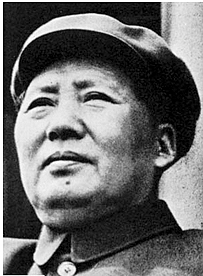
- Articles
Mao Tse-tung — The Unknown Story of How the Chairman led China to Communist Hell!
Preliminary Note: The article that follows is a review of Mao: The Unknown Story by Jung Chang and Jon Halliday. However, I have chosen to include this Preliminary Note before the formal review for reasons that will soon become apparent to the reader. This authoritative biography and history comes in a hefty tome illustrated with many rare photographs as well as detailed Maps of specific areas discussed in the text, which actually ends on page 631. The supportive material includes an additional 85 pages of meticulously compiled Notes followed by a comprehensive Bibliography of Chinese as well as Non-Chinese Sources. There is also an Index and a List of Interviewees and Archives consulted.
Although I have considerable experience with Amazon.com reviews, I found the early reviews of this book, with negative comments and votes in the thousands, shocking. The book was appreciated by most readers; nevertheless, it ended unjustly with a rating of 3.6 out of 5 stars because of an unfair, orchestrated, political campaign of vilification of which Mao himself would have been proud. This reminds me, frankly, of the Active Measures and Disinformation Department of the Soviet KGB, although of course this orchestration would not be directed from Moscow, but from Beijing, and bolstered by the remaining bastions of Marxism in Western academia. The brief Epilogue in Mao: The Unknown Story (page 631) reads: “Today, Mao’s portrait and his corpse still dominate Tiananmen Square in the heart of the Chinese capital. The current Communist regime declares itself to be Mao’s heir and fiercely perpetuates the myth of Mao.” The same can also be said for the followers of Mao in the West, who have fiercely attacked the courageous authors for revealing that the Chinese idol of communism was indeed rotten to the core! My sincere congratulations to the authors, Jung Chang and Jon Halliday, for this powerful exposé on Mao and The People’s Republic of China.
Review: This superb, comprehensive and authoritative biography of Mao Tse-tung (1893-1976) as well as a history of China in the 20th century has a very appropriate subtitle — “The Unknown Story” — because much of the information here is not well known and is not found in other books on Mao or China. As such, the authors, Jung Chang and Jon Halliday, should be commended for their herculean task, vivid narration, and encyclopedic scholarship.

Among the many revelations, Mao: The Unknown Story depicts and documents Chairman Mao as the brutal monster he really was; how Mao desolated his own country and exterminated his own people, party cadres and impoverished peasants alike, even whole Red Army regiments. Mao committed in his blind rage whatever crimes were necessary to attain and preserve supreme political power. “Democracy,” “justice,” “equality,” ” fraternity,” “freedom” were just words to be used for propaganda purposes, not ideals to be pursued by Chinese communists!
Joseph Stalin (1879-1953), another paranoid-megalomaniac and monster who committed untold atrocities — e.g., purges, executions, mass starvations, deaths by labor camps in the Gulag, rule by terror, etc. — shared some characteristics with Mao, yet there were differences. Stalin, at least, had personal appeal as a Soviet vozdh, who could inspire leadership — fear was mixed with awe and even admiration as Stalin ruled the Soviet Union with a dictatorial iron fist.
Stalin was noticed by Lenin, who recognized his usefulness, first as a bandit, who could obtain funds for the Party; later, as a hard-working administrator. A man who helped Lenin reach power and then ruled a communist Russia. Stalin worked hard for the Bolsheviks behind the scenes and gradually achieved supreme power because his abilities were underestimated. A comparison of Stalin and Mao is instructive in understanding the enigmatic personality of Mao in all his savagery. Here was a man who was lazy, insubordinate, and disliked by all who knew him. Yet, he seized power by duplicity, forced his subordinates to kowtow to him in abject submission; at times, he even defied Stalin and the Soviets who sustained him with money, arms, and assistance of all kind, and got away with it! Mao killed 70 million of his own people, turned the Red Bases in which he ruled into impoverished wastelands, but with subterfuge, propaganda, and American moles in the FDR administration eventually came to rule all of Mainland China for twenty-seven disastrous years. And during all those years in power Mao never took a bath, only having massages, and rarely brushed his teeth! And yet he was respected as a communist statesman and head of state of the most populous nation on earth.
Mao was hated and feared by all his followers, including the subservient Chou En-lai, ruling by absolute terror, without any principles of government, strategic foresight or judicious planning for the betterment of his country. Despite the mythic heroics of the Long March, the Chinese Civil War or the Sino-Japanese War, the fact is Mao never inspired his troops. Mao was lazy and used subterfuge and deceit to seize power from the Chinese Communist Party (CCP) and obtained the title of “Chairman,” not from a plenum of the CCP, but from Joseph Stalin. Mao’s power wasn’t gained through merit or recognition from the Party at large, but by subterfuge, intimidation of, and threats to the individual members of his inner circle Politburo.
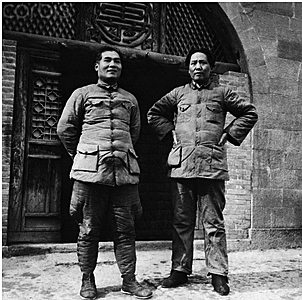
Mao ruled the Yenan Red Base for over a decade, before and during World War II. The province was devastated by mismanagement and plundering by the Red Army, turned into a wasteland under Mao’s communist dictatorship. Independent thought and action were punished. All goods and implements of labor were seized from the peasants to force them into compliance. Opium was cultivated and sold with all profits going to Mao’s communists while the people starved. Yenan’s population was decimated, impoverishment became rampant, much worse than under the Nationalist rule of Generalissimo Chiang Kai-shek. Mao’s Yenan Red Base was a government from hell, a prelude to what was to happen to the nation once the Chairman seized control of all of Mainland China.
Mao sacrificed his family members for political ends. Wives, brothers, sons and daughters were left behind, deliberately abandoned to be shot by the Nationalists or die destitute in poor villages throughout China. Mao betrayed whole communist armies, when they happened to be led by military rivals. Red soldiers were led to their deaths by irresponsible decisions or deliberately to be decimated based only on Mao’s maintenance of power and the elimination of competitors. The army of rival Chang Kuo-t’ao, the greatest and most successful army in the Long March (1934-35), was sent to the desolate northwest district to be deliberately betrayed and exterminated — thousands of soldiers buried alive, sacrificed by Mao for his own political ends. For Mao, supreme power was always paramount in all decisions.
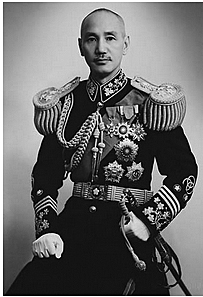
This book also describes in graphic detail how China was delivered to Mao Tse-tung with active Soviet military assistance in Northern China, as well as the tacit consent of Britain and the U.S., misled by such moles as Owen Lattimore and Lauchlin Currie in the FDR administration. Little is known about Stalin attacking and ordering the Soviet Army to occupy Outer Mongolia, seizing portions and important ports in Manchuria, and expropriating the strategic Eastern China Railway. The story of how Stalin helped Mao in the Civil War that ensued immediately after Japan’s surrender on August 15, 1945 had not been told before. The Russo-Mongolian Soviet army, 1.5 million strong, swept through and invaded all of Northern China across a 5,000 kilometer front, longer than the European front that stretched from the Baltic to the Adriatic Seas. Stalin ordered this army to continue to advance for several weeks after Japan’s surrender, helping Mao take control and giving him territories and large caches of arms left by the Japanese. These bases and supplies would boost Mao in the ensuing Civil War against Chiang Kai-shek. The occupied territories in northern China, inner Mongolia, and Manchuria were larger than those occupied by the Soviets in Eastern Europe.
Mao received the help he needed, even from the U.S., while Chiang Kai-shek was sidelined and betrayed. Little is known also (until this book) about several top generals in Chiang’s Nationalist Army, whose treachery helped Mao gain power. These officers had been recruited by the CCP while receiving officers’ training at the Whampoa Military Academy near Canton; they had become “sleeper agents”; and at the proper moment — ten, twenty years later, during the Civil War of 1946-1949, betrayed the Generalissimo, supplying vital military information, having whole armies massacred deliberately, or surrendering them to Mao.

Moles in the FDR administration continued to act on the behalf of Mao and Stalin, and against the United States, by slandering Chiang Kai-shek and exulting Mao. Mao was supposed to have fought the Japanese, while Chiang was not doing any fighting. The opposite was the truth. Except for one military campaign fought in 1940 by the Red Army Commander Peng Dehuai, who contravened Mao’s order not to engage the Japanese, the Red Army had done little against the Japanese, as Mao wanted to keep his army intact for his ultimate confrontation with Chiang. One of Mao’s orders to his army was “retreat when the enemy advances,” which they did on almost all occasions. On the other hand, Chiang’s Nationalist Army fought all the major engagements of World War II, while the Reds retreated and only occupied territories left behind by the advancing Japanese. Chang and Halliday write: “In Burma, they [the Nationalists] put more Japanese out of action in one campaign than the entire Communist army had in eight years in the whole of China.” (p. 287)
Mao won the Civil War, not because he was beloved by the people or a better military strategist than Chiang, but simply because Mao was more ruthless and vicious than Chiang. And after the communist victory, how did Mao rule China as supreme leader? What were the historic events of communist China: the Great Leap Forward and the Cultural Revolution? You need to get and read this book. One word about the aftermath, what happened to Mao’s closest comrades-in-arms — those whom he had tamed, humiliated, and terrorized for nearly half a century, some of them virtually from the founding of the CCP in 1927 to Mao’s death in 1976? Here is a brief summary:
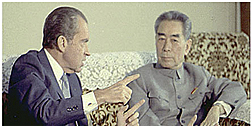
Chou En-lai (1898-1976) was the servile assistant, the charming face Mao presented to the world for diplomatic and propaganda purposes. Chou was probably the most gifted and conscientious follower; yet, he continued to serve Mao as a virtual slave, fawning over the Chairman, always submissive, and frequently made to recant his “past mistakes.” He served as Foreign Minister of the People’s Republic of China (PRC) from 1949 to 1958 and Premier from 1949 to 1976. Although he was ill, Chou tried to protect others and attempted to restrain the Red Guards during the Cultural Revolution. Yet he managed to survive the purges and violence. He was diagnosed with bladder cancer in 1974, but Mao refused to allow him to receive treatment, so that Chou would precede him in death. Chou continued to work even on his deathbed, trying unsuccessfully to moderate the Cultural Revolution, end the state of anarcho-tyranny, and keep the government of the PRC running. He died 8 months before Mao.
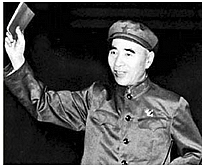
Lin Piao (1907-1971) was the youngest of Mao’s henchmen and participated in the Long March as a military commander. He was Mao’s strongest supporter throughout the Civil War and later headed the People’s Liberation Army (PLA). Lin was instrumental in the communist victory during the Civil War, particularly in the Northeastern and Manchurian campaigns. He ranked third among the Ten Marshalls, just below generals Zhu De and Peng Dehuai. He helped foster Mao’s Cult of Personality and was rewarded by being designated successor during the Cultural Revolution, up to the time of his mysterious disappearance in 1971. Only later did the world learn that Lin was implicated in an unsuccessful plot to oust Chairman Mao. Reportedly, Lin had been denounced by his daughter while attempting to escape to the USSR. Lin, his wife, and son were killed in a plane crash in Mongolia. Officially, Lin Piao, Jian Qing, and the “Gang of Four” are blamed by the PRC for the excesses of the Cultural Revolution.
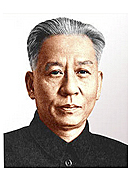
Liu Shao-ch’i (1898-1969) participated in the Long March and supported Mao’s leadership at the Zunyi conference in 1935. He helped Mao rule as second in command, assisted Mao in consolidating power and governing in Yenan, and was appointed political commissar for the reconstituted New 4th Army. After Mao’s victory over Chiang Kai-shek and the establishment of Red China (PRC), Liu remained loyal to Mao and in 1959 was designated successor to Mao as “Closest Comrade in Arms.” But witnessing the suffering of the Chinese people in the provinces, Liu tried to moderate the viciousness of the Great Leap Forward (1958-1959), for which he paid a heavy price. He was superseded by Lin Piao, and during the Cultural Revolution, Liu and his family became targets and were savagely persecuted. He was accused of “taking the capitalist road” and becoming “China’s Khrushchev.” He was imprisoned, tortured, and died an agonizing death in prison in 1969.
Jiang Qing (1914-1991), “Madame Mao,” was Mao’s fourth wife and constant companion. She had been an actress in Shanghai and joined the underground CCP in 1932. She began living with Mao and then married him in 1938. During the Cultural Revolution, she emerged as a leader and was the head of the notorious “Gang of Four,” which was deposed by Deng Xiaoping. She was arrested in October 1976, one month after Mao’s death. She was prosecuted and at her trial (photo, left), she retorted in her defense, “I was Chairman Mao’s dog. Whoever Chairman Mao asked me to bite. I bit.” She was sentenced to death but her sentence was commuted to life in prison. She was released in 1984 for medical reasons and committed suicide in 1991.
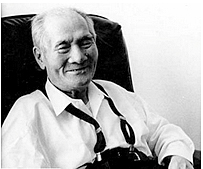
Chang Kuo-t’ao (1897-1979) was a founding member of the CCP and studied in the Soviet Union. He was the commander of the largest and most successful communist army during the Long March (1936-1937), acting independent of Mao. He was Mao’s fiercest rival and contested him for the leadership of both the Red Army and the CCP. Before joining Mao in Yenan, his army was sabotaged and destroyed by Mao’s treachery. In 1938, Chang renounced communism and escaped from Yenan to join the Nationalists. After the defeat of Chiang Kai-shek in the Civil War (1946-1949), Chang was fortunate to escape to Taiwan, and years later moved to Canada (pictured left, in Toronto in 1974). Chang wrote vivid memoirs in exile that provided valuable information, became a Christian, and died in 1979 in Toronto at age 82. The other military commanders, as we have seen and will see further, were not as fortunate as Chang.
Zhu De (1886-1976), unlike most of the other Chinese leaders, came from a poor peasant background. Nevertheless, he obtained an education and traveled abroad. He was a leader of the Chinese Communist Party (CCP), participating in the Nanchang Uprising of 1927 that formed the Red Army. Zhu and Mao led the Zhu-Mao Army in the south. He supported Mao at the Zunyi conference in 1935, and with the advent of the Long March (1936-1937), Zhu was one of the military commanders. Later, he headed the 8th Route Army with Peng Dehuai during the Sino-Japanese War. During the Civil War of 1946-1949, Zhu commanded the PLA. After the victory over Chiang Kai-shek and the Nationalists, and the formation of the PRC, he was awarded “Marshall of the People’s Republic of China.” He became Vice-Chairman of the PRC (1954-1959) and the CCP (1956-1966). But, Mao did not let bygones be bygones, and Zhu was later humiliated and disgraced during the Cultural Revolution because of “past mistakes,” but he was reinstated in the CCP in 1973. He died two months before Mao.
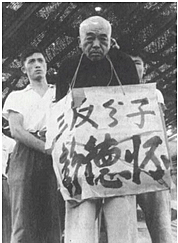
Peng Dehuai (1898-1974), along with Chang Kuo-t’ao and Lin Piao, was one the best and most successful Red Army military commanders. Peng was already a soldier at the age of 16, and fought for various warlords in Hunan province. He joined and fought with the Kuomitang (Nationalist) Army in 1926 and participated in Chiang Kai-shek’s Northern Expedition. By this time he had become a communist, and he soon broke with Chiang to join the CCP. Allied with the Zhu-Mao Army, he fought against the Nationalists to preserve the Red bases. He also supported Mao at the Zunyi Conference and was a Red Army commander during the Long March (1936-1937). Peng was an advocate of a ceasefire with Chiang Kai-shek in order to fight the common enemy, the invading Japanese, and successfully re-energyzed the communist army during the ensuing Sino-Japanese War. Peng commanded the “Hundred Regiments,” a victorious campaign and the only major battle the communists ever fought against Japan (August-December, 1940). He was to pay later for that victorious campaign, an engagement that had not been authorized by Mao. Peng was the commander of the Chinese forces fighting in the Korean War (1950-1953) and Defense Minister of the PRC from 1954 to 1959. But Mao’s long memory did not forget, and Peng became a target and victim of the Cultural Revolution. The former hero was dragged in the street and beaten to death by Maoist Red Guards in 1974.
In short, Mao’s legacy is one of unadulterated brutality and repressive dictatorship with no respect for life, liberty or justice. It is no coincidence that Mao’s greatest disciples were notable psychopaths: Pol Pot (1925-1998 ) who killed one million of his own people in Cambodia, and Abimael “Gonzalo” Guzman (1934- ) who exterminated thousands of the indigenous peasants of Peru leading the Maoist terrorist organization, Sendero Luminoso, the “Shining Path” guerillas.

Despite the book’s size at 814 pages, the text is enthralling and reads in novelistic fashion with fast-paced, flowing narrative. Truly this is a magnificent book worth reading. I agree with Simon Sebag Montefiore, author of and Stalin: The Court of the Red Tsar, who praised this tome in The Sunday Times of London, as ” A triumph that exposes its subject as probably the most disgusting of the bloody troika of 20th-century tyrant-messiahs, in terms of character, deeds — and number of victims. This is the first intimate, political biography of the greatest monster of them all — the Red Emperor of China.” I highly recommend this tome for those interested in the history of revolutions and totalitarianism in the 20th century, in general, and communist China and Chairman Mao, in particular. Get this book and read it!
Written by Dr. Miguel Faria
, is Associate Editor in Chief in socioeconomics, politics, medicine, and world affairs of Surgical Neurology International (SNI). He was appointed and served at the behest of President George W. Bush as member of the Injury Research Grant Review Committee of the Centers for Disease Control and Prevention (CDC), 2002-2005. He is the author of Vandals at the Gates of Medicine (1995); Medical Warrior: Fighting Corporate Socialized Medicine (1997); and Cuba in Revolution: Escape From a Lost Paradise (2002). Dr Faria’s new book is America, Guns, and Freedom: A Journey Into Politics and the Public Health & Gun Control Movements (2019)
Copyright ©2014, 2020, Miguel A. Faria, Jr., M.D.
This article was also posted on August 24, 2020 on CCNationalSecurity.org (Citizens Commission on National Security).
This is a review of Mao: The Unknown Story by Jung Chang and Jon Halliday. Alfred A. Knopf, New York, NY, 2005, 814 pages.
The photographs used to illustrate this commentary came from a variety of sources and do not necessarily appear in Chang and Halliday’s Mao: The Unknown Story.
1 thought on “Mao Tse-tung — The Unknown Story of How the Chairman led China to Communist Hell!”
And China is still a communist (fascist) totalitarian, repressive state. This week in History —The Tiananmen Square massacre and the man who stopped the tanks, June 4, 1989. There were student-led demonstrations in Beijing in 1989 beginning in April and ending in June following the collapse of the Berlin Wall and the beginning of the crumbling of the Soviet Empire in Europe. The Chinese people also wanted freedom. A Chinese citizen armed only with grocery bags stopped the entire convoy of Red Army tanks. The students were massacred, thousands dead, the protests were crushed and Chinese totalitarian communism survived. Cuban communism, also survives via force and repression. But we should never forget! — Dr. Miguel A. Faria, Cuba in Revolution — Escape From a Lost Paradise (2001). 😢 https://www.facebook.com/coachbillycarson/videos/1697197933651455